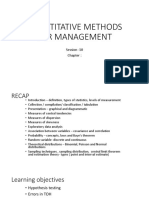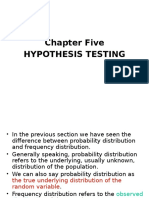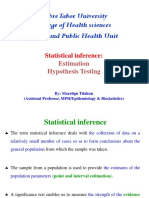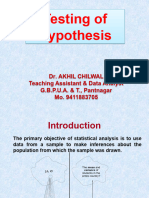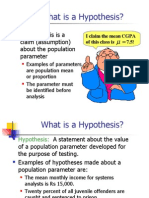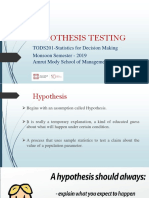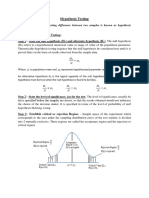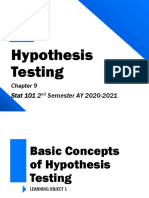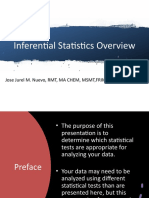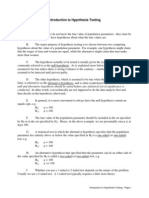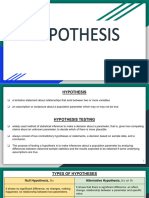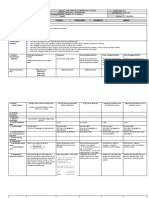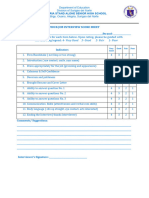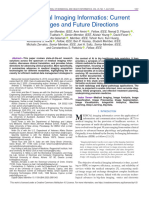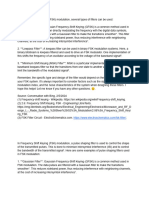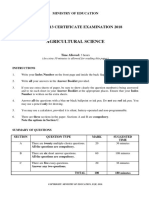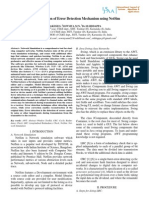0% found this document useful (0 votes)
18 views32 pagesTopic & Structure of The Lesson: Hypothesis Testing
The document provides an overview of hypothesis testing, including its principles, types, and procedures. It outlines key terms, learning outcomes, and practical applications in various fields such as medicine and education. Additionally, it explains the use of chi-square tests for goodness of fit and independence, along with examples and statistical calculations.
Uploaded by
farazi.2301062Copyright
© © All Rights Reserved
We take content rights seriously. If you suspect this is your content, claim it here.
Available Formats
Download as PDF, TXT or read online on Scribd
0% found this document useful (0 votes)
18 views32 pagesTopic & Structure of The Lesson: Hypothesis Testing
The document provides an overview of hypothesis testing, including its principles, types, and procedures. It outlines key terms, learning outcomes, and practical applications in various fields such as medicine and education. Additionally, it explains the use of chi-square tests for goodness of fit and independence, along with examples and statistical calculations.
Uploaded by
farazi.2301062Copyright
© © All Rights Reserved
We take content rights seriously. If you suspect this is your content, claim it here.
Available Formats
Download as PDF, TXT or read online on Scribd
/ 32
